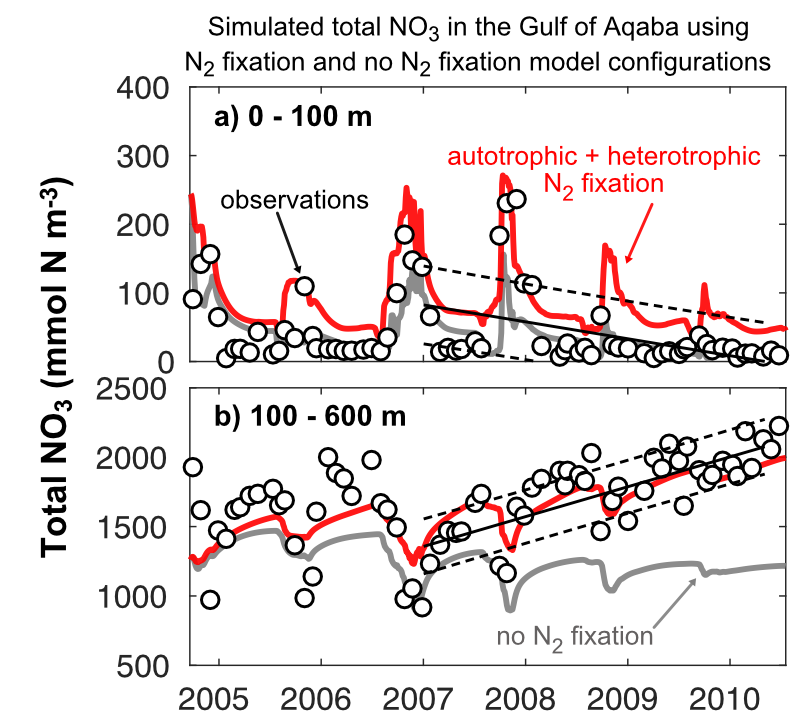Biological nitrogen fixation refers to the conversion of dinitrogen gas via reduction to ammonium into bioavailable forms of nitrogen by a specialized group of microbes containing the nitrogenase enzyme complex. Various types of autotrophic microbes are capable of fixating nitrogen in the marine environment, including free-living cyanobacteria, diatom-cyanobacterial associations and colonial forming Trichodesmium spp. Most recently, studies demonstrate that marine nitrogen fixation can be carried out without light by nitrogen-fixing heterotrophic bacteria. However, direct measurements of nitrogen fixation in aphotic environments are relatively scarce. Heterotrophic, as well as unicellular and colonial photoautotrophic diazotrophs, are present in the oligotrophic Gulf of Aqaba (northern Red Sea). In this project, we evaluated the relative importance of these different diazotrophs to determine phosphate and nitrate variability at this location.

We show that a model without N2 fixation can replicate the observed surface chlorophyll but fails to accurately simulate inorganic nutrient concentrations throughout the water column. Models with N2 fixation improve simulated deep nitrate by enriching sinking organic matter in nitrogen, suggesting that N2 fixation is necessary to explain the observations. The observed vertical structure of nutrient ratios and oxygen is reproduced best with a model that includes heterotrophic, colonial and unicellular autotrophic diazotrophs (Kuhn et al., 2018).